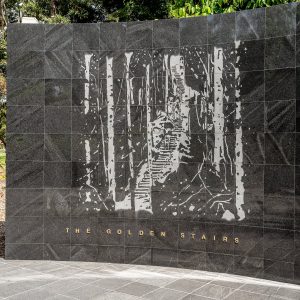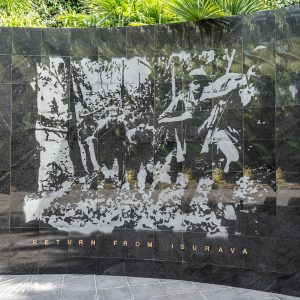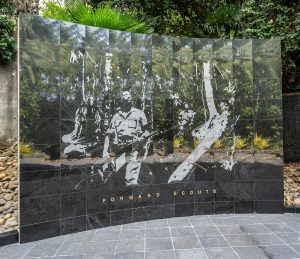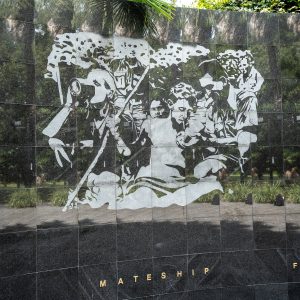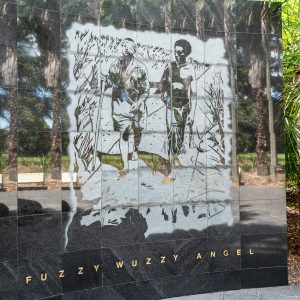Our beautiful Memorial Centrepiece is the tranquil heart of the Walkway.
The five iconic images that have been sandblasted onto the Centrepiece walls each tell a story of the courage, endurance, mateship and sacrifice of the Australians who fought in the campaign.
Construction of the Walkway and Centrepiece began in late 1995, and the first stage was opened in October 1996. Since then, the Centrepiece has become the living, breathing heart of the Walkway, and is the location for our commemorative and wreath laying services.
Please visit the Centrepiece next time you’re at the Walkway, but remember the Centrepiece and the Walkway itself is a war memorial, so please ensure it is treated with respect.
ICONIC IMAGES ON THE MEMORIAL CENTREPIECE
SUPPORT THE WALKWAY
The Walkway’s success is dependent on the goodwill and services of many volunteers. You may wish to support the Walkway by becoming a volunteer, joining the Friends of Kokoda or by donating
SUPPORT US